2019 |
||||
| 66. |  | Bleimann, Udo; Burkhardt, Dirk; Humm, Bernhard; Loew, Robert; Regier, Stefanie; Stengel, Ingo; Walsh, Paul (Ed.) Proceedings of the 5th Collaborative European Research Conference (CERC 2019) Proceedings CEUR-WS.org, Aachen, Germany, vol. Vol. 2348, 2019, ISSN: 1613-0073, (urn:nbn:de:0074-2348-5). Abstract | Links | BibTeX | Tags: Art, Bioinformatics, Biology, Business Information Systems, CERC, Civil Engineering, Computer Science, Education, IT Security, Marketing, Multimedia, Psychology @proceedings{CERC2019,In today's world, which has recently seen fractures and isolation forming among states, international and interdisciplinary collaboration is an increasingly important source of progress. Collaboration is a rich source of innovation and growth. It is the goal of the Collaborative European Research Conference (CERC 2019) to foster collaboration among friends and colleagues across disciplines and nations within Europe. CERC emerged from a long-standing cooperation between the Cork Institute of Technology, Ireland and Hochschule Darmstadt - University of Applied Sciences, Germany. CERC has grown to include more well-established partners in Germany (Hochschule Karlsruhe and Fernuniversität Hagen), United Kingdom, Greece, Spain, Italy, and many more. CERC is truly interdisciplinary, bringing together new and experienced researchers from science, engineering, business, humanities, and the arts. At CERC researchers not only present their findings as published in their research papers. They are also challenged to collaboratively work out joint aspects of their research during conference sessions and informal social events and gatherings. To organize such an event involves the hard work of many people. Thanks go to the international program committee and my fellow program chairs, particularly to Prof Udo Bleimann and Prof Ingo Stengel for supporting me in the review process. Dirk Burkhardt and Dr Robert Loew put a great effort into setting up the website and conference management system and preparing the conference programme and proceedings. Many of my colleagues from Hochschule Darmstadt were invaluable for local organization. Thanks also to Hochschule Darmstadt and the Research Center for Applied Informatics (FZAI) for financial support. | ||
| 65. |  | Burkhardt, Dirk; Nazemi, Kawa Visual legal analytics – A visual approach to analyze law-conflicts of e-Services for e-Mobility and transportation domain Journal Article In: ICTE in Transportation and Logistics 2018 (ICTE 2018), vol. 149, pp. 515-524, 2019, ISSN: 1877-0509. Abstract | Links | BibTeX | Dimensions | PlumX | Tags: e-Government, e-Mobility, e-Transportation, Law Visualization, Legal Analysis, Semantic Data, Visual Analytics @article{Burkhardt2019,The impact of the electromobility has next to the automotive industry also an increasing impact on the transportation and logistics domain. In particular the today’s starting switches to electronic trucks/scooter lead to massive changes in the organization and planning in this field. Public funding or tax reduction for environment friendly solutions forces also the growth of new mobility and transportation services. However, the vast changes in this domain and the high number of innovations of new technologies and services leads also into a critical legal uncertainty. The clarification of a legal status for a new technology or service can become cost intensive in a dimension that in particular startups could not invest. In this paper we therefore introduce a new approach to identify and analyze legal conflicts based on a business model or plan against existing laws. The intention is that an early awareness of critical legal aspect could enable an early adoption of the planned service to ensure its legality. Our main contribution is distinguished in two parts. Firstly, a new Norm-graph visualization approach to show laws and legal aspects in an easier understandable manner. And secondly, a Visual Legal Analytics approach to analyze legal conflicts e.g. on the basis of a business plans. The Visual Legal Analytics approach aims to provide a visual analysis interface to validate the automatically identified legal conflicts resulting from the pre-processing stage with a graphical overview about the derivation down to the law roots and the option to check the original sources to get further details. At the end analyst can so verify conflicts as relevant and resolve it by advancing e.g. the business plan or as irrelevant. An evaluation performed with lawyers has proofed our approach. | ||
| 64. |  | Nazemi, Kawa; Burkhardt, Dirk Visual analytical dashboards for comparative analytical tasks – a case study on mobility and transportation Journal Article In: ICTE in Transportation and Logistics 2018 (ICTE 2018), vol. 149, pp. 138-150, 2019, ISSN: 1877-0509. Abstract | Links | BibTeX | Dimensions | PlumX | Tags: Data Analytics, Information Visualization, Mobility, Prediction, Transportation, Visual Analytics, Visual Interfaces, Visual Tasks @article{Nazemi2019,Mobility, logistics and transportation are emerging fields of research and application. Humans’ mobility behavior plays an increasing role for societal challenges. Beside the societal challenges these areas are strongly related to technologies and innovations. Gathering information about emerging technologies plays an increasing role for the entire research in these areas. Humans’ information processing can be strongly supported by Visual Analytics that combines automatic modelling and interactive visualizations. The juxtapose orchestration of interactive visualization enables gathering more information in a shorter time. We propose in this paper an approach that goes beyond the established methods of dashboarding and enables visualizing different databases, data-sets and sub-sets of data with juxtaposed visual interfaces. Our approach should be seen as an expandable method. Our main contributions are an in-depth analysis of visual task models and an approach for juxtaposing visual layouts as visual dashboards to enable solving complex tasks. We illustrate our main outcome through a case study that investigates the area of mobility and illustrates how complex analytical tasks can be performed easily by combining different visual interfaces. | ||
2018 |
||||
| 63. |  | Burkhardt, Dirk; Nazemi, Kawa Visualizing Law - A Norm-Graph Visualization Approach based on Semantic Legal Data Proceedings Article In: 4th International Conference of the Virtual and Augmented Reality in Education (VARE 2018), pp. 154-162, CAL-TEK SRL, Rende, Italy, 2018, ISBN: 978-1-5108-7222-6. Abstract | Links | BibTeX | Dimensions | PlumX | Tags: Decision Support Systems, e-Government, Information Visualization, Law Visualization, Norm-graph, Policy Modeling, Semantic Data @inproceedings{Burkhardt2018a,Laws or in general legal documents regulate a wide range of our daily life and also define the borders of business models and commercial services. However, legal text and laws are almost hard to understand. From other domains it is already known that visualizations can help understanding complex aspects easier. In fact, in this paper we introduce a new approach to visualize legal texts in a Norm-graph visualization. In the developed Norm-graph visualization it is possible to show major aspects of laws and make it easier for users to understand it. The Norm-graph is based on semantic legal data, a so called Legal-Concept-Ontology. | ||
| 62. |  | Nazemi, Kawa; Burkhardt, Dirk Juxtaposing Visual Layouts – An Approach for Solving Analytical and Exploratory Tasks through Arranging Visual Interfaces Proceedings Article In: 4th International Conference of the Virtual and Augmented Reality in Education (VARE 2018), pp. 144-153, CAL-TEK SRL, Rende, Italy, 2018, ISBN: 978-1-5108-7222-6. Abstract | Links | BibTeX | Dimensions | PlumX | Tags: Information Visualization, Visual Analytics, Visual Interfaces, Visual Tasks @inproceedings{Burkhardt2018,Interactive visualization and visual analytics systems enables solving a variety of tasks. Starting with simple search tasks for outliers, anomalies etc. in data to analytical comparisons, information visualizations may lead to a faster and more precise solving of tasks. There exist a variety of methods to support users in the process of task solving, e.g. superimposing, juxtaposing or partitioning complex visual structures. Commonly all these methods make use of a single data source that is visualized at the same time. We propose in this paper an approach that goes beyond the established methods and enables visualizing different databases, data-sets and sub-sets of data with juxtaposed visual interfaces. Our approach should be seen as an expandable method. Our main contributions are an in-depth analysis of visual task models and an approach for juxtaposing visual layouts as visual interfaces to enable solving complex tasks. | ||
2017 |
||||
| 61. |  | Nazemi, Kawa; Burkhardt, Dirk; Kuijper, Arjan Analyzing the Information Search Behavior and Intentions in Visual Information Systems Journal Article In: Journal of Computer Science Technology Updates (JCSTU), vol. 4, no. 2, pp. 19–27, 2017, ISSN: 2410-2938. Abstract | Links | BibTeX | Dimensions | PlumX | Tags: Adaptive Visualization, Distant Supervision, Human-Computer Interaction, Information Retrieval, Information Search Behavior, Interactive Search, Predictive Analysis, User-Centered Design @article{Nazemi2017,Visual information search systems support different search approaches such as targeted, exploratory or analytical search. Those visual systems deal with the challenge of composing optimal initial result visualization sets that face the search intention and respond to the search behavior of users. The diversity of these kinds of search tasks require different sets of visual layouts and functionalities, e.g. to filter, thrill-down or even analyze concrete data properties. This paper describes a new approach to calculate the probability towards the three mentioned search intentions, derived from users’ behavior. The implementation is realized as a web-service, which is included in a visual environment that is designed to enable various search strategies based on heterogeneous data sources. In fact, based on an entered search query our developed search intention analysis web-service calculates the most probable search task, and our visualization system initially shows the optimal result set of visualizations to solve the task. The main contribution of this paper is a probability-based approach to derive the users’ search intentions based on the search behavior enhanced by the application to a visual system. | ||
| 60. | 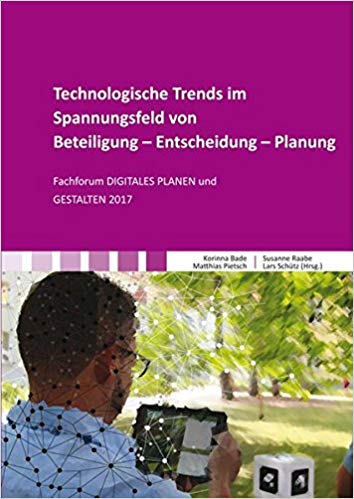 | Burkhardt, Dirk; Nazemi, Kawa Informationsvisualisierung und Visual Analytics zur Unterstützung von E-Government Prozessen Proceedings Article In: Bade, Korinna; Pietsch, Matthias; Raabe, Susanne; Schütz, Lars (Ed.): Technologische Trends im Spannungsfeld von Beteiligung – Entscheidung – Planung: Fachforum DIGITALES PLANEN und GESTALTEN 2017, pp. 29–38, Shaker Verlag, Aachen, Germany, 2017, ISBN: 978-3844054392. Abstract | Links | BibTeX | Dimensions | PlumX | Tags: e-Government, e-Participation, Information Visualization, Interactive Visualization, Policy Modeling, Visual Analytics @inproceedings{Burkhardt2017b,Politische und gesellschaftliche Prozesse werden durch Informationen sehr stark geprägt, wie auch die jüngsten Ereignisse aufzeigen. Diese Informationen können, trotz enormer Fortschritte, nicht immer aus den sehr großen, heterogenen und verteilten Daten entnommen werden. „Big Data“ stellt somit auch in der öffentlichen Verwaltung eine immer größere Herausforderung dar. Sowohl durch eine umfangreiche Erhebung von Statistiken, als auch durch Dokumente wie Berichte und Studien, wachsen in Behörden die zu bewältigenden Informationsaufgaben. Darüber hinaus spielt die Berücksichtigung von Bürgermeinungen, vor allem auf kommunaler Ebene, eine immer größere Rolle. Eine Auswertung ohne moderne Informationstechnik ist dabei kaum mehr möglich. Damit aber aus diesen Daten tatsächlich die relevanten Informationen extrahiert werden, bedarf es Informationsvisualisierung und Visual Analytics Systeme die sehr detaillierte, aber dennoch einfache und schnelle Analysen für den Menschen erlauben. Dies stellt aber sehr hohe Anforderungen an die visuellen Systeme, da sie gleichzeitig auch den Nutzer und dessen Fähigkeiten berücksichtigen müssen. | ||
2016 |
||||
| 59. |  | Burkhardt, Dirk; Pattan, Sachin; Nazemi, Kawa; Kuijper, Arjan Search Intention Analysis for Task- and User-Centered Visualization in Big Data Applications Journal Article In: Procedia Computer Science. ICTE 2016, Riga Technical University, Latvia, vol. 104, pp. 539 - 547, 2016, ISSN: 1877-0509. Abstract | Links | BibTeX | Dimensions | PlumX | Tags: Human-Computer Interaction, Information Retrieval, Interactive Search, Predictive Analysis, User-Centered Design @article{Burkhardt2016,A new approach for classifying users’ search intentions is described in this paper. The approach uses the parameters: word frequency, query length and entity matching for distinguishing the user's query into exploratory, targeted and analysis search. The approach focuses mainly on word frequency analysis, where different sources for word frequency data are considered such as the Wortschatz frequency service by the University of Leipzig and the Microsoft Ngram service (now part of the Microsoft Cognitive Services). The model is evaluated with the help of a survey tool and few machine learning techniques. The survey was conducted with more than one hundred users and on evaluating the model with the collected data, the results are satisfactory. In big data applications the search intention analysis can be used to identify the purpose of a performed search, to provide an optimal initially set of visualizations that respects the intended task of the user to work with the result data. | ||
| 58. | 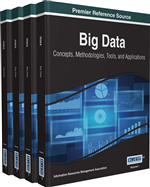 | Nazemi, Kawa; Steiger, Martin; Burkhardt, Dirk; Kohlhammer, Jörn Information Visualization and Policy Modeling Book Chapter In: Big Data: Concepts, Methodologies, Tools, and Applications, Chapter 8, pp. 139-180, IGI Global, Hershey, PA, USA, 2016, ISBN: 9781466698406. Abstract | Links | BibTeX | Dimensions | PlumX | Tags: Adaptation, Adaptive Visualization, Information Visualization, Semantics, Semantics Visualization, SemaVis, Visual Analytics @inbook{Nazemi2016,Policy design requires the investigation of various data in several design steps for making the right decisions, validating, or monitoring the political environment. The increasing amount of data is challenging for the stakeholders in this domain. One promising way to access the “big data” is by abstracted visual patterns and pictures, as proposed by information visualization. This chapter introduces the main idea of information visualization in policy modeling. First abstracted steps of policy design are introduced that enable the identification of information visualization in the entire policy life-cycle. Thereafter, the foundations of information visualization are introduced based on an established reference model. The authors aim to amplify the incorporation of information visualization in the entire policy design process. Therefore, the aspects of data and human interaction are introduced, too. The foundation leads to description of a conceptual design for social data visualization, and the aspect of semantics plays an important role. | ||
2015 |
||||
| 57. | 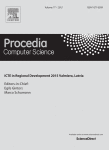 | Burkhardt, Dirk; Nazemi, Kawa; Tomic, Silvana; Ginters, Egils Best-practice Piloting of Integrated Social Media Analysis Solution for E-Participation in Cities Journal Article In: Procedia Computer Science. ICTE in regional Development 2015 Valmiera, Latvia, vol. 77, pp. 11–21, 2015, ISSN: 1877-0509. Abstract | Links | BibTeX | Dimensions | PlumX | Tags: Decision Making, e-Government, Evaluation, Information and Communication Technologies, Piloting, Policy Modeling @article{Burkhardt2015d,Goal definitions and developments are challenging in large-scale projects, because of the different expertise and skills of the stakeholders. Development often fails its intended goal because of misunderstandings and unclear definitions and descriptions during the planning phase. The paper describes a novel approach to collecting requirements and defining development plans by provisioning a guideline which informs what has to be done, when and in what form. The User Case Requirement Analysis model was applied in the large-scale European project FUPOL during the development of a Social Media Analysis System. Based on this a successful task-based evaluation could be performed that shows the benefit of the model and the software. | ||
| 56. | 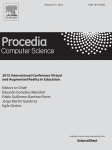 | Nazemi, Kawa; Burkhardt, Dirk; Ginters, Egils; Kohlhammer, Jorn Semantics Visualization – Definition, Approaches and Challenges Journal Article In: Procedia Computer Science. 2015 International Conference Virtual and Augmented Reality in Education, vol. 75, pp. 75 - 83, 2015, ISSN: 1877-0509. Abstract | Links | BibTeX | Dimensions | PlumX | Tags: Semantic Visualization, Simulation, Virtualization, Visualization @article{NAZEMI201575,The visualization of the simulation results must be done in conformity with beneficiaries perception and professional domain understanding. It means that right data must be identified before. Semantic technologies provide new ways for accessing data and acquiring knowledge. The underlying structures allow finding information easier, gathering meanings and associations of the data entities and associating the data to users’ knowledge. Even though the focus of the research in this area is more to provide “machine readable” data, human-centered systems benefit from the technologies too. Especially graphical representations of the semantically structured data play a key-role in today's research. The meaningful relations of data entities and the meaningful and labeled clustering of data in form of semantic concepts enable new ways to visualize data. With these new ways, various challenges are related with deploying semantics visualizations beyond analytical search and simulation. The goal is to give a common understanding of the term semantics as it is used in semantic web. This paper dealt with the general idea of semantics visualization. First a short introduction to semantic formalisms is given followed by a general definition. Subsequently approaches and techniques of existing semantics visualizations are presented, where-as a new classification is introduced to describe the techniques. The article concludes with future challenges in semantics visualization focusing on users, data and tasks. | ||
| 55. |  | Burkhardt, Dirk; Nazemi, Kawa; Ginters, Egils Best-Practice Piloting Based on an Integrated Social Media Analysis and Visualization for E-Participation Simulation in Cities Journal Article In: Procedia Computer Science. 2015 International Conference Virtual and Augmented Reality in Education, vol. 75, pp. 66 - 74, 2015, ISSN: 1877-0509. Abstract | Links | BibTeX | Dimensions | PlumX | Tags: e-Participation, Policy Making, Semantic Visualization, Simulation @article{Burkhardt2015c,E-Participation and the engagement of citizens in politics are on the agenda in many countries. Therefore, a number of project and programs were initiated that aim at finding creative and effective solutions for involving citizens. One intended aspect is the provision of transparency that enables citizens to analyze socio-economical indicators and serves as basement for initial data storing for e-participation scenarios simulation. A beyond going step is to consider citizens’ opinions in the policy making process. Unfortunately this will only be possible; if a significant number of citizens know what concrete aspect should be realized. The growth and establishment of social media nowadays allow most people to discuss political ideas and critics virtually and anonymously achieving higher credibility of the data usable for policy making. However, the major barrier is the different topical languages, the representatives’ role and weak visualization of the results. This article dealt with a best-practice piloting approach for discussing and realizing innovative solutions with a variety of stakeholders from different domains. The core of this paper is how to deal and manage the different perspective on development process, to aim on designing a common set of requirements and development procedure. The methodology is practically and beneficial applied as social media integration solution in the EC FP7 FUPOL research project. | ||
| 54. | 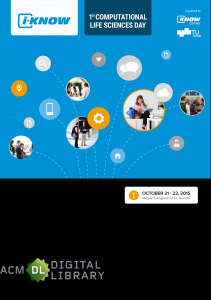 | Nazemi, Kawa; Retz, Reimond; Burkhardt, Dirk; Kuijper, Arjan; Kohlhammer, Jörn; Fellner, Dieter W. Visual Trend Analysis with Digital Libraries Proceedings Article In: Proceedings of the 15th International Conference on Knowledge Technologies and Data-driven Business, pp. 14:1–14:8, ACM, New York, NY, USA, 2015, ISBN: 978-1-4503-3721-2, (Honorable Mention of the Demo). Abstract | Links | BibTeX | Dimensions | PlumX | Tags: Data Mining, Information Extraction, Information Visualization, Trend Analysis, Visual Analytics @inproceedings{Nazemi2015c,The early awareness of new technologies and upcoming trends is essential for making strategic decisions in enterprises and research. Trends may signal that technologies or related topics might be of great interest in the future or obsolete for future directions. The identification of such trends premises analytical skills that can be supported through trend mining and visual analytics. Thus the earliest trends or signals commonly appear in science, the investigation of digital libraries in this context is inevitable. However, digital libraries do not provide sufficient information for analyzing trends. It is necessary to integrate data, extract information from the integrated data and provide effective interactive visual analysis tools. We introduce in this paper a model that investigates all stages from data integration to interactive visualization for identifying trends and analyzing the market situation through our visual trend analysis environment. Our approach improves the visual analysis of trends by investigating the entire transformation steps from raw and structured data to visual representations. | ||
| 53. | 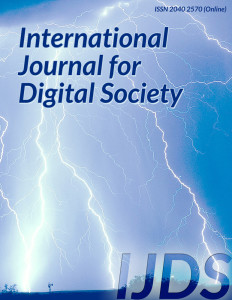 | Burkhardt, Dirk; Nazemi, Kawa; Parisay, Mohsen; Kohlhammer, Jörn Visual Correlation Analysis to Explain Open Government Data based on Linked-Open Data for Decision Making Journal Article In: International Journal of Digital Society (IJDS), vol. 5, no. 3, pp. 915–923, 2015, ISSN: 2040-2570. Abstract | Links | BibTeX | Dimensions | PlumX | Tags: @article{Burkhardt2015e,Public authorities normally consider statistical data about indicators in their decision makings. Such valid kind of data allows an objective observation about indicator developments over time. In case of a significant deviation from the normal indicator level, it is difficult to understand the reasons for upcoming problems. In this article we present an approach that allows an enhanced information gathering through an improved information overview about the depending aspects to such an indicator by considering governmental data-sources that provide also other types of data than just statistics. Even more, our approach integrates a system that allows generating explanations for Open Government Data, especially to specific indicators, based on Linked-Open Data and shows it in graphical form to enable a fast overview gathering. This allows decision-makers to get hints for unexpected reasons of concrete problems that may influence an indicator. | ||
| 52. | 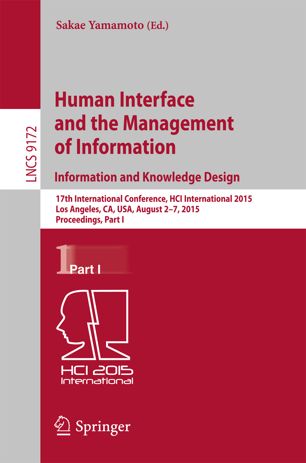 | Burkhardt, Dirk; Nazemi, Kawa; Ginters, Egils; Aizstrauts, Artis; Kohlhammer, Jörn Explorative Visualization of Impact Analysis for Policy Modeling by Bonding Open Government and Simulation Data Proceedings Article In: Yamamoto, Sakae (Ed.): Human Interface and the Management of Information. Information and Knowledge Design, pp. 34–45, Springer International Publishing, Switzerland, 2015, ISBN: 978-3-319-20612-7. Abstract | Links | BibTeX | Dimensions | PlumX | Tags: Decision Making, Impact Analysis, Information Visualization, Open Government Data, Policy Modeling, Simulation, Visual Analysis @inproceedings{Burkhardt2015,Problem identification and solution finding are major challenges in policy modeling. Statistical indicator-data build the foundation for most of the required analysis work. In particular finding effective and efficient policies that solve an existing political problem is critical, since the forecast validation of the effectiveness is quite difficult. Simulation technologies can help to identify optimal policies for solutions, but nowadays many of such simulators are stand-alone technologies. In this paper we introduce a new visualization approach to enable the coupling of statistical indicator data from Open Government Data sources with simulators and especially simulation result data with the goal to provide an enhanced impact analysis for political analysts and decision makers. This allows, amongst others a more intuitive and effective way of solution finding. | ||
| 51. |  | Sonntagbauer, Susanne; Sonntagbauer, Peter; Nazemi, Kawa; Burkhardt, Dirk Policy Modeling Methodologies Book Chapter In: Public Affairs and Administration: Concepts, Methodologies, Tools, and Applications, Chapter 23, pp. 512–524, IGI Global, Hershey, PA, USA, 2015, ISBN: 9781466683587. Abstract | Links | BibTeX | Dimensions | PlumX | Tags: e-Government, e-Participation, Information and Communication Technologies, Open Data, Policy, Policy Modeling, Process @inbook{Sonntagbauer2015b,The process to develop sustainable public policies is done by public authorities ensuring the involvement of all stakeholders. ICT is rarely included in most of the today's applied policymaking processes. Other process definitions with a focus on ICT inclusion in policy modeling still exist, but they are not well defined. This chapter gives an overview of the existing policy modeling process types and explains their major foci and how they consider ICT and the practical process in public authorities. Afterwards, based on these descriptions, the general requirements on a new ICT-oriented policy modeling process that allows the inclusion of ICT into a valid and useful process for public authorities is given. | ||
| 50. |  | Sonntagbauer, Susanne; Sonntagbauer, Peter; Nazemi, Kawa; Burkhardt, Dirk The FUPOL Policy Lifecycle Book Chapter In: Public Affairs and Administration: Concepts, Methodologies, Tools, and Applications, Chapter 8, pp. 158–186, IGI Global, Hershey, PA, USA, 2015, ISBN: 9781466683587. Abstract | Links | BibTeX | Dimensions | PlumX | Tags: e-Government, e-Participation, FUPOL, Policy Design, Policy Lifecycle, Policy Modeling @inbook{Sonntagbauer2015,The purpose of this chapter is to outline an advanced policy lifecycle, the FUPOL model with its ability to link technical features in the area of policy modeling. The FUPOL Policy Lifecycle is based on 6 stages, which are further divided into 8 main tasks. These main tasks are split up into 19 subtasks to provide a very detailed policy lifecycle structure. The detailed breakdown allows one to link each task to various technical features, such as opinion maps, policy indicator dashboard, knowledge database, and simulation and visualization tools. The chapter further argues that the methodology applied is future proof and has the potential of accommodating new technologies in the future. | ||
| 49. |  | Nazemi, Kawa; Burkhardt, Dirk; Hoppe, David; Nazemi, Mariam; Kohlhammer, Jörn Web-based Evaluation of Information Visualization Journal Article In: Procedia Manufacturing. 6th International Conference on Applied Human Factors and Ergonomics (AHFE 2015) and the Affiliated Conferences, vol. 3, pp. 5527–5534, 2015, ISSN: 2351-9789. Abstract | Links | BibTeX | Dimensions | PlumX | Tags: Evaluation Methods, Evaluation Tools, Human Perception, Information Visualization, User Study, Web-based Evaluation @article{Nazemi2015,Information visualization is strongly related to human perception, human behavior, and in particular human interaction. It is a discipline that focuses on human to enable him gathering insights, knowledge, and solving various and heterogeneous tasks. The human-centered characteristic of information visualization requires valid and proper user studies that improve the system or validate their benefits. New methods, techniques, or approaches of information visualization are commonly evaluated. However, the evaluation is either time and cost consuming or they are made minimum resources that leads to results, which may not be valid. In particular the number of participants is commonly restricted and does not enable a valid assumption about the results. Thus performance measures plays a key role in information visualization, existing web-survey tools are not convenient. We introduce in this paper a new method that enables web-based evaluations of information visualization systems. Our main contribution is the enhancement of web-based survey tools with performance measures. Our approach enables the measurement of task-completion time, correctness of solved tasks, and includes a number of pre- and post-questionnaires. | ||
| 48. | 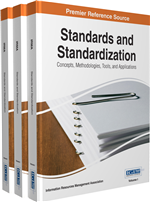 | Burkhardt, Dirk; Nazemi, Kawa; Zilke, Jan Ruben; Kohlhammer, Jörn; Kuijper, Arjan Fundamental Aspects for E-Government Book Chapter In: Standards and Standardization: Concepts, Methodologies, Tools, and Applications, Chapter 3, pp. 52–68, IGI Global, Hershey, PA, USA, 2015, ISBN: 9781466681118. Abstract | Links | BibTeX | Dimensions | PlumX | Tags: e-Government, e-Participation, Information and Communication Technologies, Open Data, Policy, Policy Modeling @inbook{Burkhardt2015eb,The upcoming initiatives using ICT in the government process should strengthen the benefit of e-government in most countries. Since e-government among other e-related terms is a widely (interpreted) term, it is sometimes challenging to understand the objective and goals of an initiative. Therefore, in this chapter, the authors introduce and explain most e-government related terms. Even more, they outline some interesting initiatives and implementations to explain the benefits of using ICT in the government domain. Concrete activities are aligned to the terms to explain their practical use in a better way. The authors conclude with several challenges that arise when thinking of the implementation of e-government services. Overall, this chapter should give a good overall view of e-government and the related issues. | ||
2014 |
||||
| 47. | 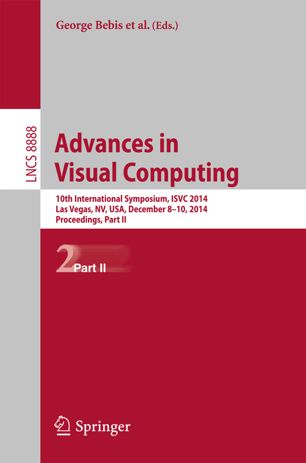 | Nazemi, Kawa; Burkhardt, Dirk; Retz, Wilhelm; Kohlhammer, Jörn Adaptive Visualization of Social Media Data for Policy Modeling Proceedings Article In: Bebis, George; Boyle, Richard; Parvin, Bahram; Koracin, Darko; McMahan, Ryan; Jerald, Jason; Zhang, Hui; Drucker, Steven M.; Kambhamettu, Chandra; Choubassi, Maha El; Deng, Zhigang; Carlson, Mark (Ed.): Advances in Visual Computing. ISVC 2014, pp. 333–344, Springer International Publishing, Switzerland, 2014, ISBN: 978-3-319-14249-4. Abstract | Links | BibTeX | Dimensions | PlumX | Tags: Information Visualization, Policy Modeling, Search Paradigm, Social Media Data, Visual Variable @inproceedings{Nazemi2014b,The visual analysis of social media data emerged a huge number of interactive visual representations that use different characteristics of the data to enable the process of information acquisition. The social data are used in the domain of policy modeling to gather information about citizens' demands, opinions, and requirements and help to decide about political policies. Although existing systems already provide a huge number of visual analysis tools, the search and exploration paradigm is not really clear. Furthermore, the systems commonly do not provide any kind of human centered adaptation for the different stakeholders involved in the policy making process. In this paper, we introduce a novel approach that investigates the exploration and search paradigm from two different perspectives and enables a visual adaptation to support the exploration and analysis process. | ||
| 46. |  | Nazemi, Kawa; Burkhardt, Dirk; Retz, Reimond; Kuijper, Arjan; Kohlhammer, Jörn Adaptive Visualization of Linked-Data Proceedings Article In: Bebis, George; Boyle, Richard; Parvin, Bahram; Koracin, Darko; McMahan, Ryan; Jerald, Jason; Zhang, Hui; Drucker, Steven M.; Kambhamettu, Chandra; Choubassi, Maha El; Deng, Zhigang; Carlson, Mark (Ed.): Advances in Visual Computing. ISVC 2014, pp. 872–883, Springer International Publishing, Switzerland, 2014, ISBN: 978-3-319-14364-4. Abstract | Links | BibTeX | Dimensions | PlumX | Tags: Application Scenario, Information Visualization, User Model, Visual Representation, Visual Search @inproceedings{Nazemi2014,Adaptive visualizations reduces the required cognitive effort to comprehend interactive visual pictures and amplify cognition. Although the research on adaptive visualizations grew in the last years, the existing approaches do not consider the transformation pipeline from data to visual representation for a more efficient and effective adaptation. Further todays systems commonly require an initial training by experts from the field and are limited to adaptation based either on user behavior or on data characteristics. A combination of both is not proposed to our knowledge. This paper introduces an enhanced instantiation of our previously proposed model that combines both: involving different influencing factors for and adapting various levels of visual peculiarities, on content, visual layout, visual presentation, and visual interface. Based on data type and users’ behavior, our system adapts a set of applicable visualization types. Moreover, retinal variables of each visualization type are adapted to meet individual or canonical requirements on both, data types and users’ behavior. Our system does not require an initial expert modeling. | ||
| 45. | 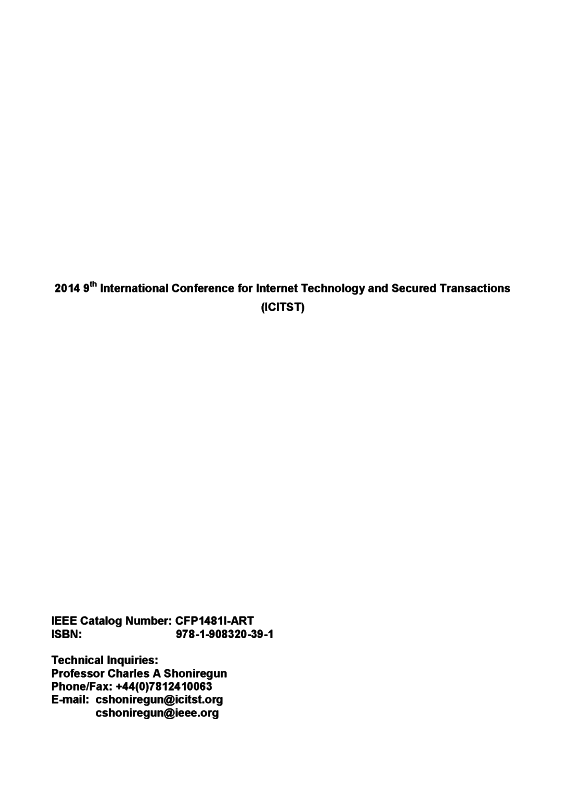 | Burkhardt, Dirk; Nazemi, Kawa; Retz, Wilhelm; Kohlhammer, Jörn Visual Explanation of Government-Data for Policy Making through Open-Data Inclusion Proceedings Article In: The 9th International Conference for Internet Technology and Secured Transactions (ICITST-2014), pp. 83-89, Infonomics Society IEEE, Piscataway, NJ, USA, 2014, ISBN: 978-1-908320-39-1. Abstract | Links | BibTeX | Dimensions | PlumX | Tags: Decision Making, e-Government, Information Visualization, Linked-Open Data Visualization, Open Government Data Visualization, Policy Modeling, Rule Generation @inproceedings{Burkhardt2014c,Commonly, data used in public authorities are statistical data about certain indicator. Such valid kind of data allows an objective observation about indicator developments over time. In case of a significant deviation from the normal indicator level, it is difficult to understand the reasons for upcoming problems. In our paper we present an approach that allows an enhanced information gathering through an improved information overview about the depending aspects to such an indicator by considering governmental data-sources that provide also other types of data than just statistics. Even more, our approach integrates a system that allows generating explanations for Open Government Data, especially to specific indicators, based on Linked-Open Data. This enables decision-makers to get hints for unexpected reasons of concrete problems that may influence an indicator. | ||
| 44. |  | Burkhardt, Dirk; Nazemi, Kawa; Klamm, Christopher; Kohlhammer, Jörn; Kuijper, Arjan Comparison of e-Participation Roadmap in Industrial and Developing Countries Based on Germany and Kenya Proceedings Article In: Proceedings of the 8th International Conference on Theory and Practice of Electronic Governance, pp. 399–402, ACM, New York, NY, USA, 2014, ISBN: 978-1-60558-611-3. Abstract | Links | BibTeX | Dimensions | PlumX | Tags: Digital Inclusion, e-Government, e-Participation, Information and Communication Technologies, Public Participation, Study @inproceedings{Burkhardt2014b,This paper compares the E-Participation roadmaps of industrial and developing countries, based on Germany and Kenya as representatives. Therefore, the ICT roadmap of each country is described in a clear shape and with representative E-Participation projects of each country. Based on these projects, the comparison is performed on a categorical level in terms of (1) participation forms, (2) used ICT, and (3) socio-political requirements. Afterwards, the results are summarized to determine an overall view on the E-Participation situation in both countries. As a result of the comparison similarities and significant differences will be identified. The results are useful for software developing organizations that want to create ICT governance tools for industrial as well as developing countries and therefore need to consider the characteristics and requirements of both country types. | ||
| 43. | 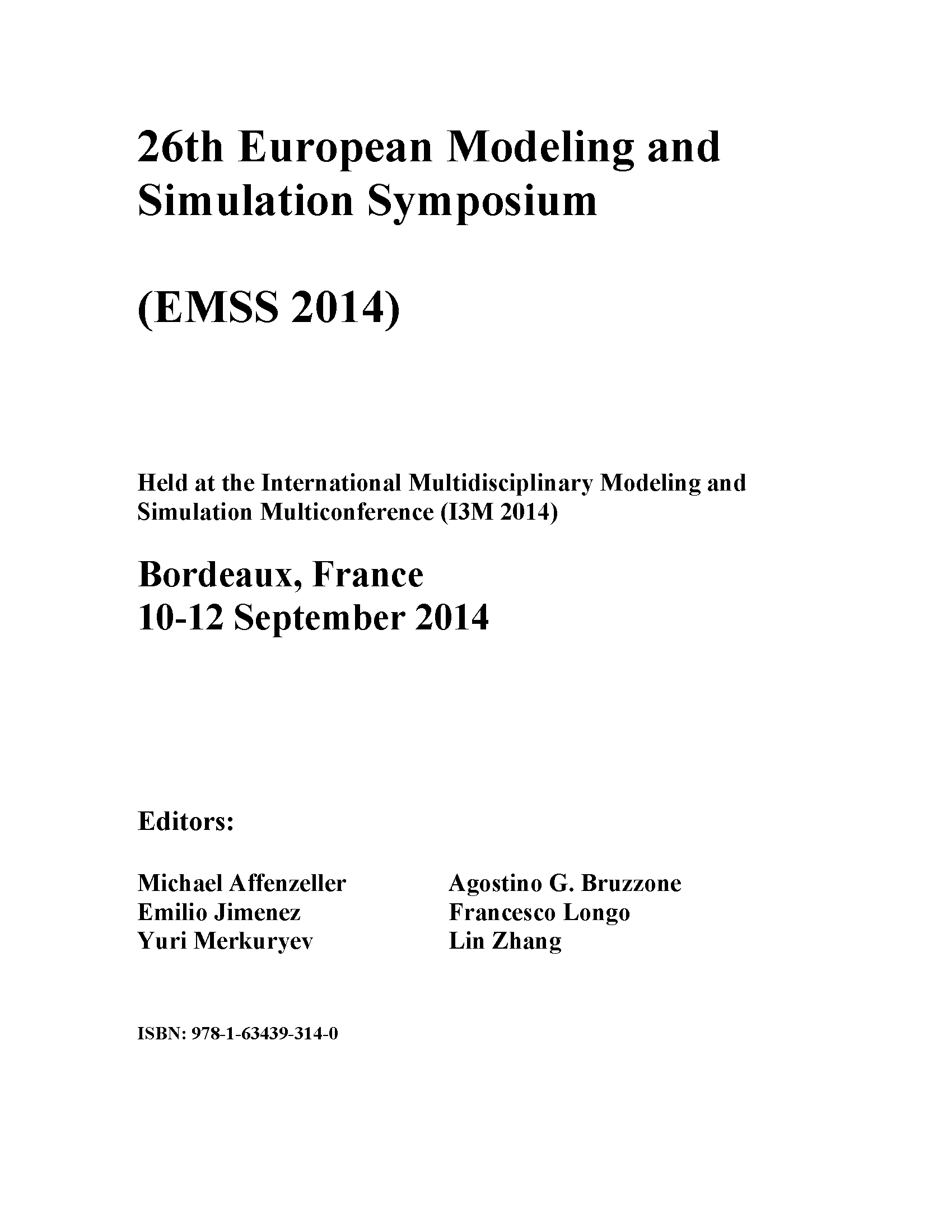 | Ginters, Egils; Aizstrauts, Artis; Baltruks, Mikelis; Nazemi, Kawa; Burkhardt, Dirk; Sonntagbauer, Peter; Sonntagbauer, Susanne; Gutierrez, Jorge Martin Fupol Simulators and Advanced Visualization Framework Integration Proceedings Article In: Affenzeller, Michael (Ed.): 26th European Modeling and Simulation Symposium, EMSS 2014: Held at the International Multidisciplinary Modeling and Simulation Multiconference, pp. 523–529, International Multidisciplinary Modeling and Simulation Multiconference (I3M) Curran, Red Hook, NY, , 2014, ISBN: 978-1-63439-314-0. Abstract | Links | BibTeX | Tags: Policy Modeling, SemaVis, Simulation, Visualization @inproceedings{Ginters2014,FP7 FUPOL project No.287119 (see www.fupol.eu) aims at a new approach to traditional politics modeling. The FUPOL will be able to automatically collect, analyze and interpret opinions expressed on a large scale from the Internet and social networks. This will enable governments to gain a better understanding of the needs of citizens. Likewise the software will have the capabilities to simulate the effects of policies and laws and to assist governments in the whole policy design process. Basic visualization of the simulation results are supported by the simulators however visualization facilities are limited, therefore for detailed visual analysis of simulation data SemasVis environment is used. | ||
| 42. | 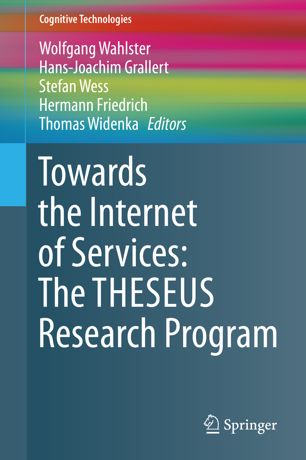 | Nazemi, Kawa; Breyer, Matthias; Burkhardt, Dirk; Stab, Christian; Kohlhammer, Jörn SemaVis: A New Approach for Visualizing Semantic Information Book Chapter In: Wahlster, Wolfgang; Grallert, Hans-Joachim; Wess, Stefan; Friedrich, Hermann; Widenka, Thomas (Ed.): Towards the Internet of Services: The THESEUS Research Program, Chapter 15, pp. 191–202, Springer International Publishing, Switzerland, 2014, ISBN: 978-3-319-06755-1. Abstract | Links | BibTeX | Dimensions | PlumX | Tags: Resource Description Framework, Semantic Data, Semantic Information, Semantic Structure, Usage Scenario @inbook{Nazemi2014e,Information is an indispensable resource today. Access to and interaction with information play more and more a key role, whereas the amount of accessible information increases. Semantic technologies provide new solutions to structure this important property. One promising way to access the complex semantic structures and the huge amount of data is visualization. Today's Semantic Visualization systems offer primarily proprietary solutions for predefined and known users and usage scenarios. The adaptation to other scenarios and users is often cost- and time-consuming. This article presents a novel model for a fully adaptable and adaptive Semantics Visualization framework. Starting with the introduction of a new visualization model, the implementation of this model will be described. The article concludes with selected advantages of the described visualization technology. | ||
2019 |
||||
| 66. |  | Proceedings of the 5th Collaborative European Research Conference (CERC 2019) Proceedings CEUR-WS.org, Aachen, Germany, vol. Vol. 2348, 2019, ISSN: 1613-0073, (urn:nbn:de:0074-2348-5). | ||
| 65. |  | Visual legal analytics – A visual approach to analyze law-conflicts of e-Services for e-Mobility and transportation domain Journal Article In: ICTE in Transportation and Logistics 2018 (ICTE 2018), vol. 149, pp. 515-524, 2019, ISSN: 1877-0509. | ||
| 64. |  | Visual analytical dashboards for comparative analytical tasks – a case study on mobility and transportation Journal Article In: ICTE in Transportation and Logistics 2018 (ICTE 2018), vol. 149, pp. 138-150, 2019, ISSN: 1877-0509. | ||
2018 |
||||
| 63. |  | Visualizing Law - A Norm-Graph Visualization Approach based on Semantic Legal Data Proceedings Article In: 4th International Conference of the Virtual and Augmented Reality in Education (VARE 2018), pp. 154-162, CAL-TEK SRL, Rende, Italy, 2018, ISBN: 978-1-5108-7222-6. | ||
| 62. |  | Juxtaposing Visual Layouts – An Approach for Solving Analytical and Exploratory Tasks through Arranging Visual Interfaces Proceedings Article In: 4th International Conference of the Virtual and Augmented Reality in Education (VARE 2018), pp. 144-153, CAL-TEK SRL, Rende, Italy, 2018, ISBN: 978-1-5108-7222-6. | ||
2017 |
||||
| 61. |  | Analyzing the Information Search Behavior and Intentions in Visual Information Systems Journal Article In: Journal of Computer Science Technology Updates (JCSTU), vol. 4, no. 2, pp. 19–27, 2017, ISSN: 2410-2938. | ||
| 60. |  | Informationsvisualisierung und Visual Analytics zur Unterstützung von E-Government Prozessen Proceedings Article In: Bade, Korinna; Pietsch, Matthias; Raabe, Susanne; Schütz, Lars (Ed.): Technologische Trends im Spannungsfeld von Beteiligung – Entscheidung – Planung: Fachforum DIGITALES PLANEN und GESTALTEN 2017, pp. 29–38, Shaker Verlag, Aachen, Germany, 2017, ISBN: 978-3844054392. | ||
2016 |
||||
| 59. |  | Search Intention Analysis for Task- and User-Centered Visualization in Big Data Applications Journal Article In: Procedia Computer Science. ICTE 2016, Riga Technical University, Latvia, vol. 104, pp. 539 - 547, 2016, ISSN: 1877-0509. | ||
| 58. |  | Information Visualization and Policy Modeling Book Chapter In: Big Data: Concepts, Methodologies, Tools, and Applications, Chapter 8, pp. 139-180, IGI Global, Hershey, PA, USA, 2016, ISBN: 9781466698406. | ||
2015 |
||||
| 57. |  | Best-practice Piloting of Integrated Social Media Analysis Solution for E-Participation in Cities Journal Article In: Procedia Computer Science. ICTE in regional Development 2015 Valmiera, Latvia, vol. 77, pp. 11–21, 2015, ISSN: 1877-0509. | ||
| 56. |  | Semantics Visualization – Definition, Approaches and Challenges Journal Article In: Procedia Computer Science. 2015 International Conference Virtual and Augmented Reality in Education, vol. 75, pp. 75 - 83, 2015, ISSN: 1877-0509. | ||
| 55. |  | Best-Practice Piloting Based on an Integrated Social Media Analysis and Visualization for E-Participation Simulation in Cities Journal Article In: Procedia Computer Science. 2015 International Conference Virtual and Augmented Reality in Education, vol. 75, pp. 66 - 74, 2015, ISSN: 1877-0509. | ||
| 54. |  | Visual Trend Analysis with Digital Libraries Proceedings Article In: Proceedings of the 15th International Conference on Knowledge Technologies and Data-driven Business, pp. 14:1–14:8, ACM, New York, NY, USA, 2015, ISBN: 978-1-4503-3721-2, (Honorable Mention of the Demo). | ||
| 53. |  | Visual Correlation Analysis to Explain Open Government Data based on Linked-Open Data for Decision Making Journal Article In: International Journal of Digital Society (IJDS), vol. 5, no. 3, pp. 915–923, 2015, ISSN: 2040-2570. | ||
| 52. |  | Explorative Visualization of Impact Analysis for Policy Modeling by Bonding Open Government and Simulation Data Proceedings Article In: Yamamoto, Sakae (Ed.): Human Interface and the Management of Information. Information and Knowledge Design, pp. 34–45, Springer International Publishing, Switzerland, 2015, ISBN: 978-3-319-20612-7. | ||
| 51. |  | Policy Modeling Methodologies Book Chapter In: Public Affairs and Administration: Concepts, Methodologies, Tools, and Applications, Chapter 23, pp. 512–524, IGI Global, Hershey, PA, USA, 2015, ISBN: 9781466683587. | ||
| 50. |  | The FUPOL Policy Lifecycle Book Chapter In: Public Affairs and Administration: Concepts, Methodologies, Tools, and Applications, Chapter 8, pp. 158–186, IGI Global, Hershey, PA, USA, 2015, ISBN: 9781466683587. | ||
| 49. |  | Web-based Evaluation of Information Visualization Journal Article In: Procedia Manufacturing. 6th International Conference on Applied Human Factors and Ergonomics (AHFE 2015) and the Affiliated Conferences, vol. 3, pp. 5527–5534, 2015, ISSN: 2351-9789. | ||
| 48. |  | Fundamental Aspects for E-Government Book Chapter In: Standards and Standardization: Concepts, Methodologies, Tools, and Applications, Chapter 3, pp. 52–68, IGI Global, Hershey, PA, USA, 2015, ISBN: 9781466681118. | ||
2014 |
||||
| 47. |  | Adaptive Visualization of Social Media Data for Policy Modeling Proceedings Article In: Bebis, George; Boyle, Richard; Parvin, Bahram; Koracin, Darko; McMahan, Ryan; Jerald, Jason; Zhang, Hui; Drucker, Steven M.; Kambhamettu, Chandra; Choubassi, Maha El; Deng, Zhigang; Carlson, Mark (Ed.): Advances in Visual Computing. ISVC 2014, pp. 333–344, Springer International Publishing, Switzerland, 2014, ISBN: 978-3-319-14249-4. | ||
| 46. |  | Adaptive Visualization of Linked-Data Proceedings Article In: Bebis, George; Boyle, Richard; Parvin, Bahram; Koracin, Darko; McMahan, Ryan; Jerald, Jason; Zhang, Hui; Drucker, Steven M.; Kambhamettu, Chandra; Choubassi, Maha El; Deng, Zhigang; Carlson, Mark (Ed.): Advances in Visual Computing. ISVC 2014, pp. 872–883, Springer International Publishing, Switzerland, 2014, ISBN: 978-3-319-14364-4. | ||
| 45. |  | Visual Explanation of Government-Data for Policy Making through Open-Data Inclusion Proceedings Article In: The 9th International Conference for Internet Technology and Secured Transactions (ICITST-2014), pp. 83-89, Infonomics Society IEEE, Piscataway, NJ, USA, 2014, ISBN: 978-1-908320-39-1. | ||
| 44. |  | Comparison of e-Participation Roadmap in Industrial and Developing Countries Based on Germany and Kenya Proceedings Article In: Proceedings of the 8th International Conference on Theory and Practice of Electronic Governance, pp. 399–402, ACM, New York, NY, USA, 2014, ISBN: 978-1-60558-611-3. | ||
| 43. |  | Fupol Simulators and Advanced Visualization Framework Integration Proceedings Article In: Affenzeller, Michael (Ed.): 26th European Modeling and Simulation Symposium, EMSS 2014: Held at the International Multidisciplinary Modeling and Simulation Multiconference, pp. 523–529, International Multidisciplinary Modeling and Simulation Multiconference (I3M) Curran, Red Hook, NY, , 2014, ISBN: 978-1-63439-314-0. | ||
| 42. |  | SemaVis: A New Approach for Visualizing Semantic Information Book Chapter In: Wahlster, Wolfgang; Grallert, Hans-Joachim; Wess, Stefan; Friedrich, Hermann; Widenka, Thomas (Ed.): Towards the Internet of Services: The THESEUS Research Program, Chapter 15, pp. 191–202, Springer International Publishing, Switzerland, 2014, ISBN: 978-3-319-06755-1. | ||
